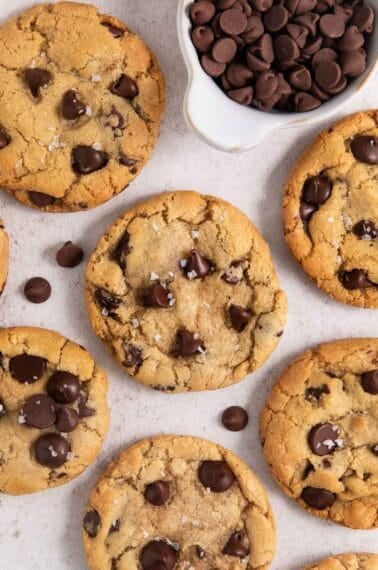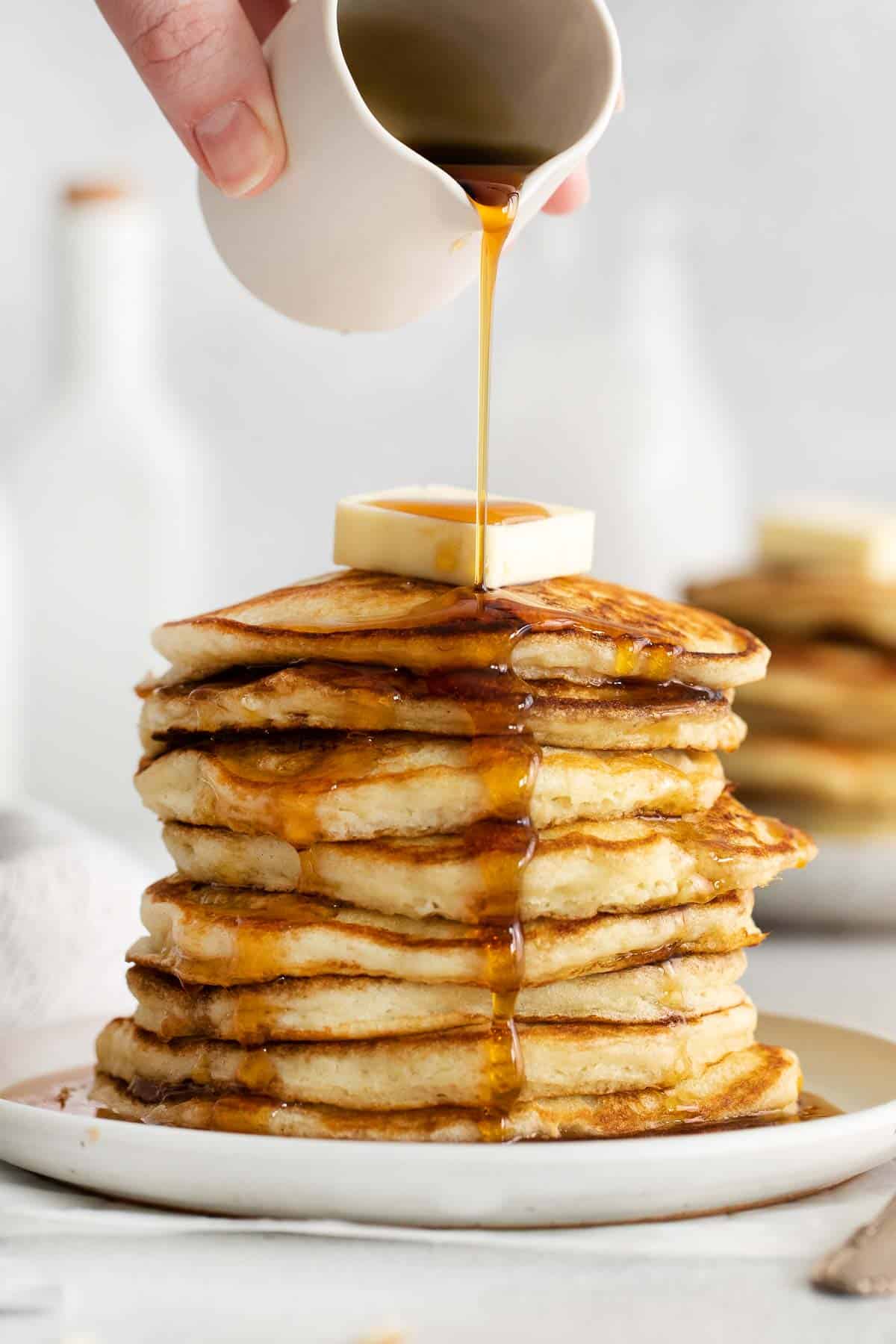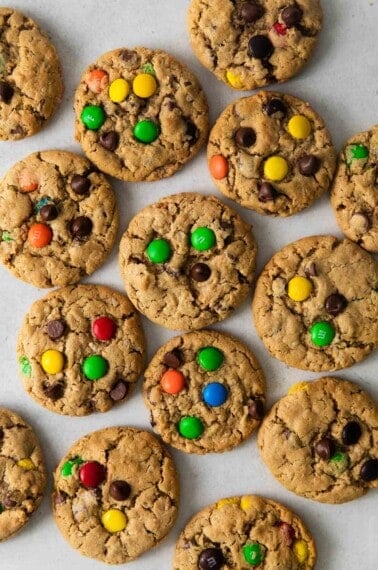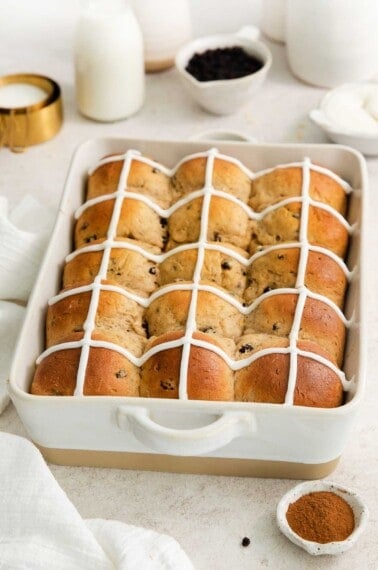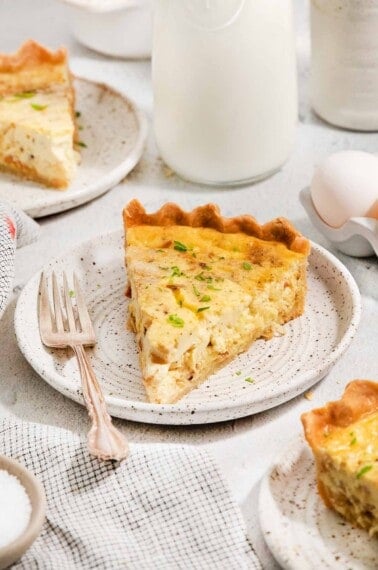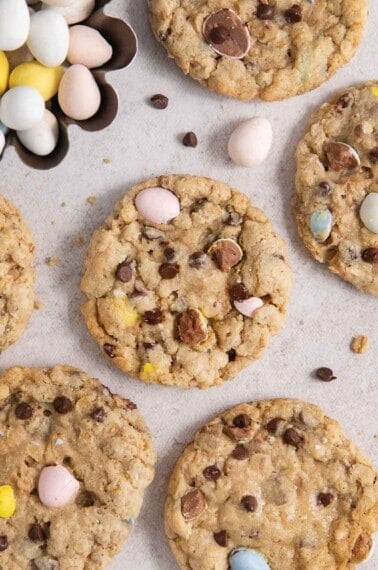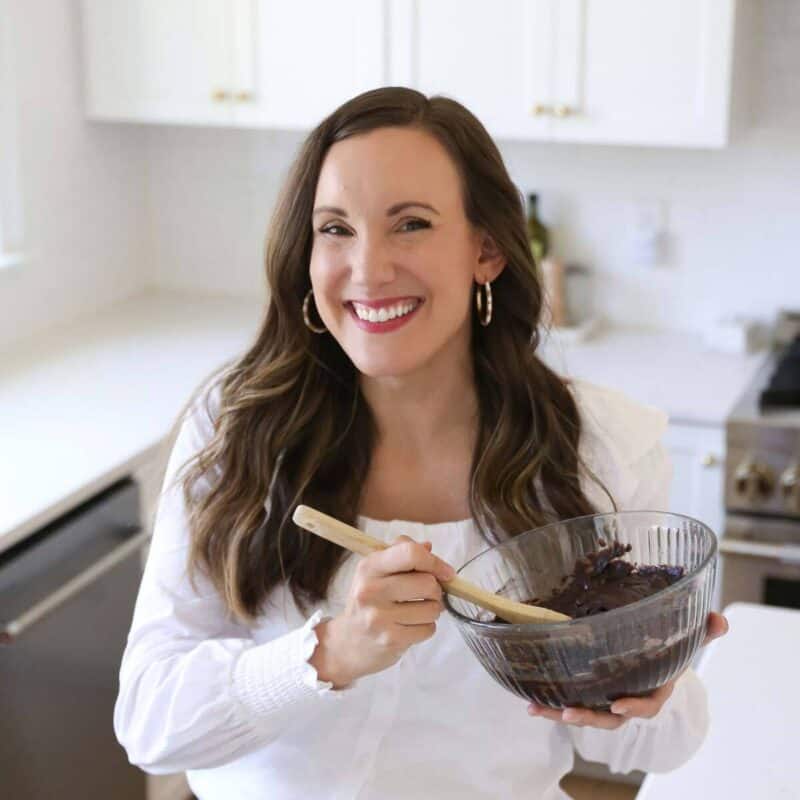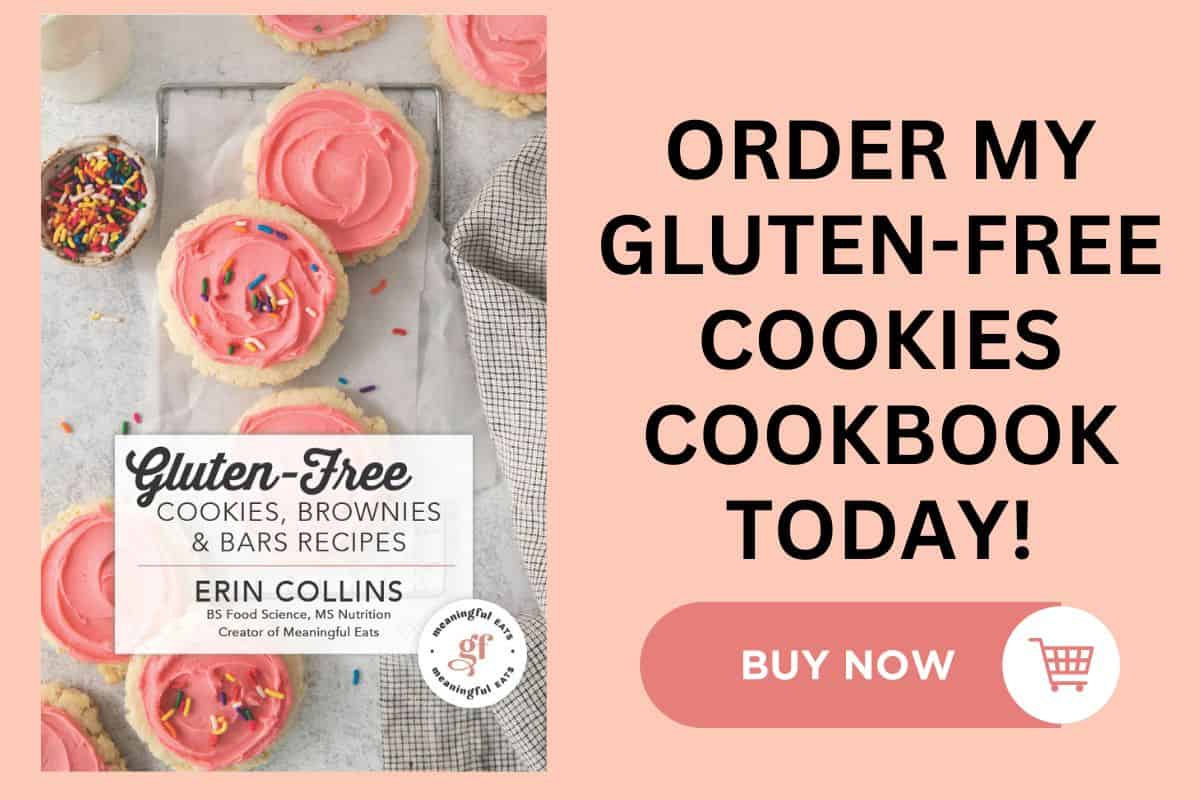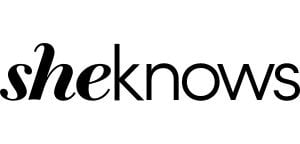Born in Taiwan and beloved around the globe, boba tea is a flavor and texture sensation. But is this international favorite gluten-free? Read on to find out.
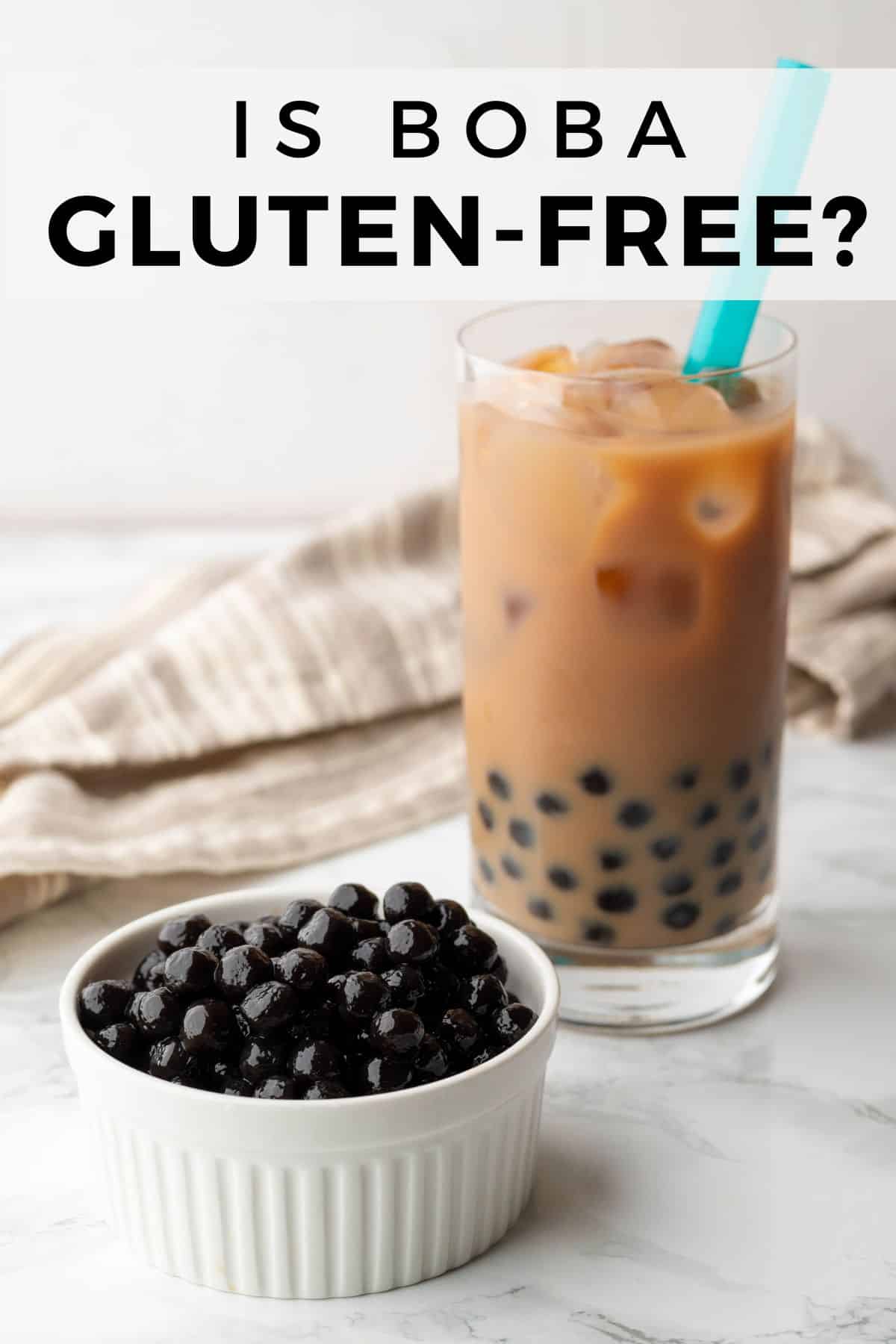
Whether you love boba for its satisfying texture, its photogenic nature, or for the fat straw used to slurp it up, you might be wondering: Is boba gluten-free?
SHORT ANSWER: YES!
Yes, boba is normally gluten-free! The tea, milk, and toppings used to make boba are made with gluten-free ingredients. Boba pearls- both tapioca pearls and popping boba- are safe to eat on a gluten-free diet.
Is Boba Gluten Free?
According to the National Celiac Association, “Yes, plain boba tea (also known as bubble tea, pearl milk tea, or tapioca milk tea) should be gluten free (GF).” Boba tea is made from naturally gluten-free ingredients. It starts with tea, then milk or fruit flavorings are added, and then it’s topped with the boba pearls themselves, which are also free from gluten.
Tapioca pearls are made from only a few simple ingredients: tapioca starch, brown sugar (which gives them their dark color), and water. Tapioca (also known as cassava root or yuca) comes from the roots of a shrub native to South America- it is gluten-free and used in many ethnic dishes.
Popping boba- which are basically little balls of fruit juice encased in a thin skin- are a bit more complex but also gluten-free. For example, these are the ingredients in Strawberry Popping Pearls by Tea Zone:
- Water
- Fructose
- Starch acetate
- Calcium lactate
- Citric acid
- Sodium alginate
- Xanthan gum
- Strawberry flavor
- Calcium chloride
- Potassium sorbate
- Sodium erythorbate
- Sucralose
- FD&C red no. 40
- CMC (aka cellulose gum)
The jellies that are also offered as a topping for boba tea are made from coconut meat enhanced with fruit flavorings, sweetener, and food coloring (natural or artificial).
You also might like these articles on gluten-free hot chocolate, is coffee gluten-free, is bourbon gluten-free, is oat milk gluten-free, is corona gluten-free and are marshmallows gluten-free.
Be sure to check out these articles on Starbucks gluten-free, Panera gluten-free, Wendy’s gluten-free, Chipotle gluten-free, Jersey Mike’s gluten-free and Chick Fil-A gluten-free.
What Is Boba?
The word “Boba” refers to the “Bubble Tea” that contains boba pearls as well as to the pearls themselves. Traditional tapioca pearls are gooey little balls of brown sugary goodness. They are added to boba tea as a fun way to give texture to the beverage. Usually served in a clear cup that shows off the pearls at the bottom, boba looks as cool as it tastes!
Boba tea was created in Taiwan in the 1980s, made its way to the United States in the 1990s, and really took off in national popularity during the 21st century. Now boba tea is a popular drink worldwide! Colorful boba shops are popping up all over these days, with dozens of flavor combinations and toppings to choose from.
Boba drinks are served with extra fat straws for sucking up tapioca pearls along with the tea. Boba drinkers have to pause while drinking to chew the pearls, which is totally part of the fun. Part drink, part treat!
Boba tea is almost always served cold, with milk or fruit flavor added, and a choice of boba pearls. Boba tea is highly sweetened, so even if it starts out as healthy green tea, the final product is definitely more of a dessert once everything is mixed together.
When ordering boba, you’ll need to choose your tea, your milk or flavor add-in, and your toppings. Toppings include jellies, tapioca pearls, and popping boba pearls. (By the way, “toppings” is something of a misnomer as boba pearls actually sink to the bottom of the cup.)
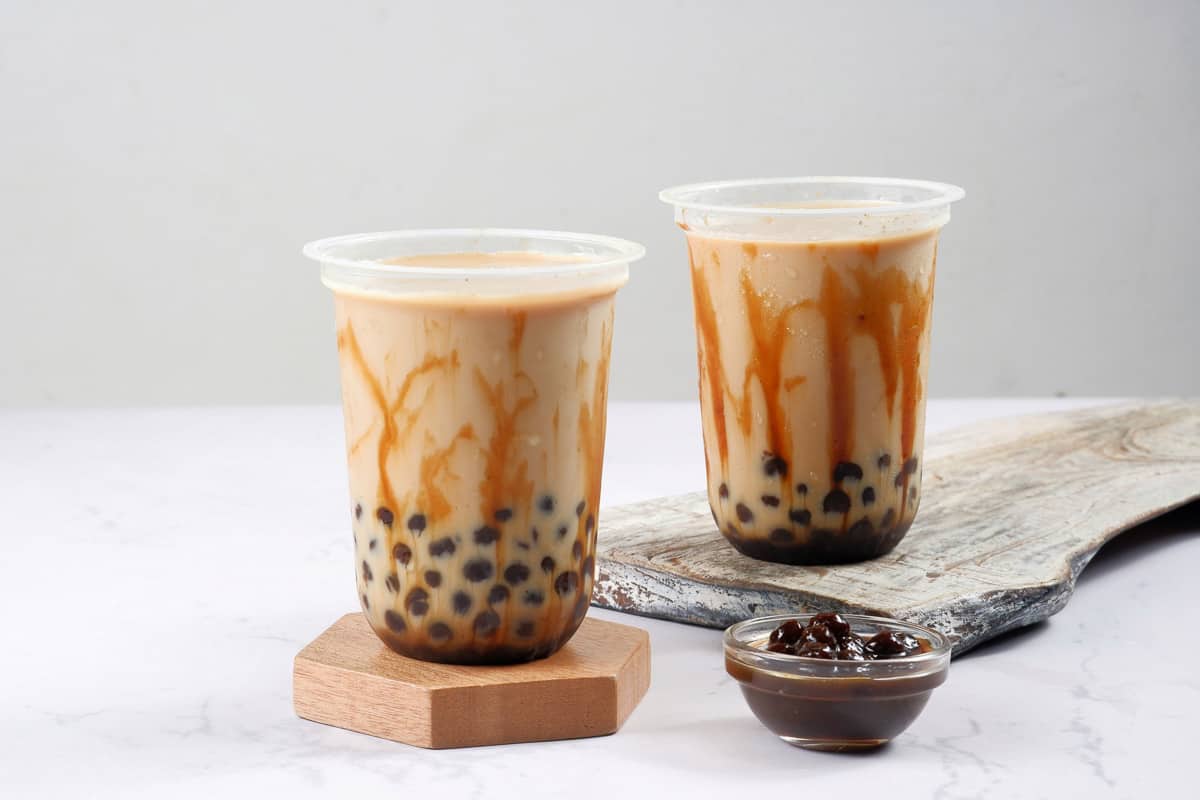
Are Tapioca Pearls Always Gluten-Free?
Tapioca starch- or cassava starch- comes from the cassava root, and it is a naturally gluten-free starch. In fact, tapioca starch can be found in many gluten-free recipes, as it mimics the gumminess also inherent to gluten.
Tapioca pearls should always be gluten-free, but it doesn’t hurt to check labels. Some brands of tapioca pearls may be certified gluten-free, meaning that they meet the FDA requirement of less than 20 parts per million (ppm) of gluten. Other pearls are not certified gluten-free but do not list any gluten ingredients on the back of the package. These are probably gluten-free, but there could be risk of cross-contact during manufacturing.
For example, Small Pearl Tapioca from Bob’s Red Mill does not indicate on the label that it is gluten-free, yet the only ingredient listed is tapioca starch. In the website FAQ’s, Bob’s Red Mill states, “Our Small Pearl Tapioca is naturally gluten-free, but it is handled in a facility that also processes almonds, walnuts, soy, wheat, corn, oats, coconut, sesame seeds, egg, and milk ingredients on shared lines. Despite thorough and stringent cleaning processes, there is a possibility for cross-contact.” To be completely sure, use only certified gluten-free tapioca pearls and ask the same of any tea shop in which you are ordering.
You also might like these articles on gluten-free alcohol and gluten-free beer.
Is Boba Tea Safe for Celiacs?
Yes, boba tea should be safe for anyone with celiac disease, because it is made from gluten-free ingredients: tea, milk, fruit flavoring, and gluten-free toppings.
If you have celiac disease and you’re ordering boba in restaurants or tea shops, let them know you are strictly gluten-free and make sure there isn’t any cross contamination risk for your boba ingredients. If the restaurant handles gluten-containing items in the same space, or without changing gloves, traces of gluten could find their way into your tea drink.
FAQs
Boba tea does not contain wheat flour or any other wheat products. It is comprised of a tea base (such as green tea, black tea, or oolong tea), milk or fruit flavoring, and toppings. The traditional topping is tapioca pearls, which are made with main ingredient tapioca starch (also known as tapioca flour), brown sugar, and water. If you opt for jellies or popping boba pearls, they are also made from ingredients that do not include flour.
Yes, boba tea is gluten-free! It is made from ingredients that do not contain gluten grains such as wheat, barley, rye, or triticale.
Boba tea is made from tea (often green, black, or oolong), milk (dairy or non-dairy), and toppings such as tapioca pearls, popping boba pearls, or jellies. All of the ingredients should be gluten-free, assuming that they have not been cross-contaminated during manufacturing and packaging, or in the restaurant where the tea is being prepared.
Boba is gluten-free, as it is made from naturally gluten-free ingredients. However, you’ll need to be specific when ordering to make sure your boba is also dairy-free. Boba can be made with dairy milk or without. So when you order, either avoid adding milk, or choose a non-dairy milk (soy milk, oat milk, almond milk, coconut milk, etc.) if it’s available.
Yes, tapioca boba pearls are gluten-free! Chewy tapioca balls are traditionally made from only tapioca starch (from the root of a cassava plant), brown sugar, and water. If you are eating a gluten-free diet, feel free to include boba tea featuring tapioca pearls as a sweet treat.
Boba pearls come as either the traditional chewy tapioca pearls or as the fruit-flavored popping boba pearls. Either way, boba pearls are gluten-free. They do not contain any gluten ingredients, so anyone with celiac disease, gluten intolerance, gluten sensitivities, or a wheat allergy should be safe to indulge.
The Bottom Line
Boba and boba tea are typically gluten-free. Boba tea (aka bubble milk tea, pearl milk tea, and bubble tea) is made by combining tea (usually black, green, or oolong), fresh milk (dairy or alternative) or fruit flavoring, and toppings that include tapioca pearls, popping boba, and jellies.
Tea is naturally gluten-free, and so is milk. The toppings offered are made from gluten-free ingredients as well. Tapioca pearls are simply tapioca starch, brown sugar, and water; popping boba is made from sweetened fruit juice with a gel-like outer layer; and jellies are made primarily from coconut. All of these ingredients are normally free from gluten, but it’s smart to ask when ordering just to make sure.
